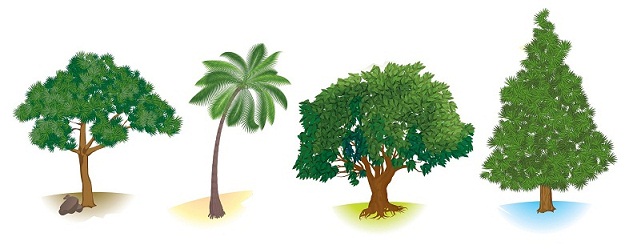25 Different Types of Tree Species with Their Names and Uses
Trees are the most essential living component in our nature. Trees help to maintain a balance in the ecosystem. They make the environment look lush and green while supplying sufficient coolness to the surroundings. Unfortunately, the rate at which they are being cut down is rather alarming and sad. However, some of the giant trees are difficult to forget or not notice. Take a look at some of the different types of trees in India.
What is a Tree:
According to botanical sciences, a perennial plant with stretched out stem, or trunk, which supports the branches and leaves is called a Tree. The definition includes woody plants that have secondary growth in the form of lumber, where plants are grown above a specific height.
Everybody loves nature! The main characteristic of any tree is how different they are from each other, and trees or plants with similar traits are classified into families. Some plants merge with other plants to overcome some problems. Classification of trees can be done based on any number of variables.
- Classify them based on their biological class: Angiosperm and Gymnosperm.
- You can classify them based on the leaves: Deciduous and Evergreen.
- Classification based on the bark.

Clasification Of Trees:
There are many ways you can have varieties of trees.
1. Based on the leaves:
There are two subcategories when you identify trees based on leaves, and they are Deciduous and Evergreens.
Deciduous trees:
It refers to the trees that shed leaves seasonally, and most of the broadleaf trees are deciduous. It has a high rate of photosynthesis because of the shape and the arrangement of the leaf patterns. Shedding leaves prepare them for winter and have good water preservation. Since there is seasonal shedding, these trees are affected by winter weather conditions.
Examples: Some of the models for deciduous trees are Oak, Maple, and Elm.



















